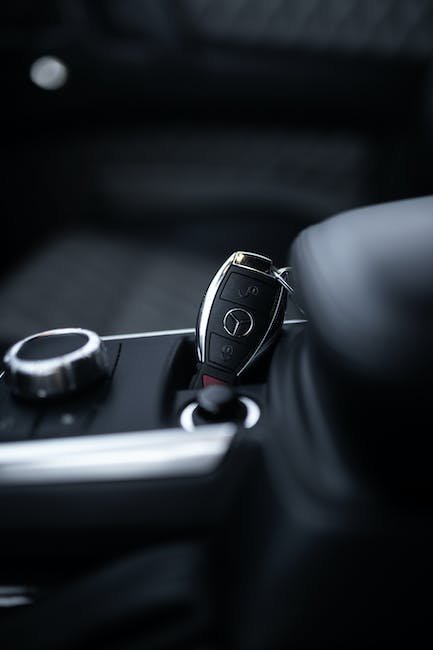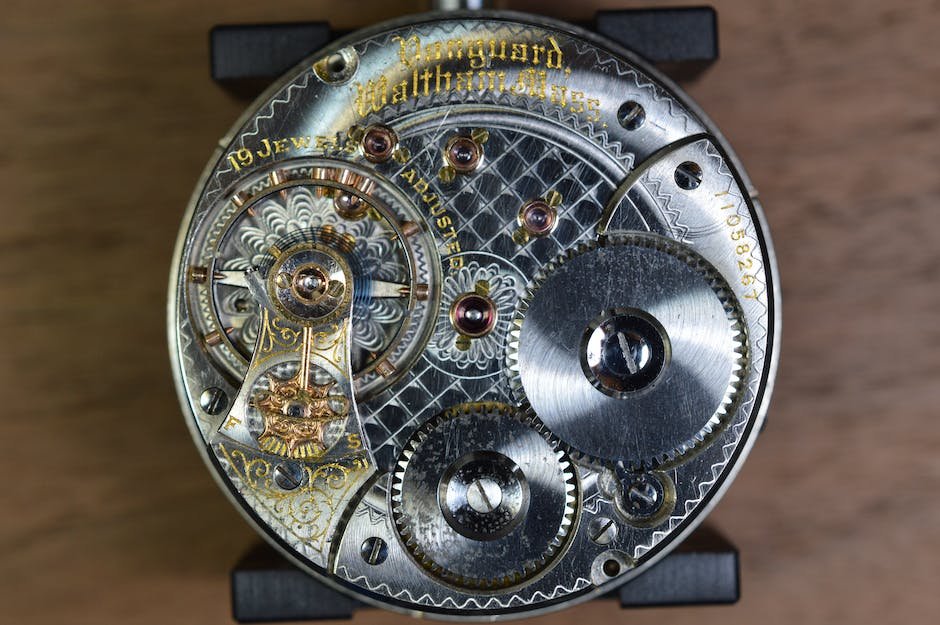Have you ever found yourself in front of a mysterious combination lock? Perhaps it was guarding a secret chest rumored to be filled with ancient treasures or securing the entrance to a forgotten underground lair. Whatever the case, these intriguing contraptions have captivated our imaginations with their enigmatic secrets. But fear not, intrepid reader, for today we embark on a journey into the depths of mechanical marvels to unravel the inner workings of a combination lock. Prepare to have your curiosity satisfied as we shed light on the intricate mechanics behind these fascinating devices, revealing the secrets that lie within their circular prisons.
Table of Contents
- The Inner Workings of a Combination Lock
- Exploring the Intricacies of the Locking Mechanism
- Unraveling the Secrets of the Dial and Wheels
- Effective Methods for Setting and Resetting Your Combination
- Mastering the Art of Safely Opening a Combination Lock
- Q&A
- The Way Forward

The Inner Workings of a Combination Lock
Unlocking the mysteries behind a combination lock reveals a fascinating set of inner workings. Unlike conventional padlocks that require a physical key, a combination lock relies on a unique series of numbers or symbols to grant access. These sleek and compact devices are widely used to secure various belongings, ranging from school lockers to high-security safes.
At the heart of a combination lock lies a complex mechanism known as the tumble wheel. Composed of multiple disks stacked on top of each other, this ingenious system is what enables the lock to function. Each disk has notches, and when aligned properly with corresponding disks, they create a pathway for the lock to open. The outer dial of the lock is used to turn the disks, engaging them in the correct sequence.
Combination locks often employ certain security features to deter unauthorized access. Most commonly, these include a false gate and anti-shim technology. The false gate presents an obstacle, making it challenging for anyone attempting to ”feel” their way to unlock the device. On the other hand, anti-shim technology prevents the use of a thin metal strip, known as a shim, from bypassing the mechanism. These additional layers of security contribute to the reliability of combination locks, offering peace of mind in a compact, reliable package.
- Briefly summarized, consist of:
- A set of discrete disks stacked together, known as the tumble wheel mechanism.
- Notches on each disk, creating a pathway for the lock to open when aligned correctly.
- An outer dial used to rotate the disks in the correct sequence.

Exploring the Intricacies of the Locking Mechanism
The locking mechanism is a fascinating component that plays a crucial role in various devices and systems. Understanding its intricacies not only unveils the mechanics behind the secure functioning of locks but also sheds light on the historical and technological advancements in this field.
One of the primary elements of a locking mechanism is the tumblers, which are small pins or disks that prevent the lock from turning without the correct key. These tumblers, often made of hardened steel, are meticulously placed and aligned within the lock’s cylinder. When the correct key is inserted, it aligns the tumblers at different heights, allowing the lock to turn freely. The precision engineering involved in the creation of these tiny tumblers is a testament to human ingenuity and craftsmanship.
Furthermore, the locking mechanism can be enhanced with additional features like master key systems and complex keyways. Master key systems allow for multiple keys to operate a series of locks, providing convenience and flexibility while maintaining security. Additionally, intricate keyways, which are unique patterns cut into keys and locks, make them more tamper-resistant, further bolstering the protection they offer.

Unraveling the Secrets of the Dial and Wheels
Unlocking the enigmatic mysteries concealed within the intricate mechanisms of dials and wheels is a quest that has intrigued and captivated us for centuries. These silent yet essential components play a significant role in countless devices that surround us, from antique timepieces to modern control panels.
Delving into the complexity of dials, we discover a symphony of numerical arrangements, symbols, and markers, each with a distinct purpose. They provide crucial visual cues, allowing us to decipher measurements, keep track of time, and navigate through a vast array of options. By skillfully rotating these small discs, information is revealed, choices are made, and connections are established.
A similarly mesmerizing universe awaits those who dare to explore the realm of wheels. With their circular harmony of interlocking teeth, wheels transfer energy, transmit torque, and assist in precise adjustments. From steering wheels guiding us on endless highways to the ingenious gears of complex machinery, these marvels seamlessly blend form and function in a dance of mechanical elegance.
As we embark on this luminous journey through the enigmatic domain of dials and wheels, prepare to become enchanted by the hidden symmetries, mathematical choreography, and tactile delights that lie beneath their surface. Join us as we unravel the secrets that shape our world, revealing the artistry, science, and untold tales that dwell within these quiet, unassuming heroes of mechanical ingenuity.

Effective Methods for Setting and Resetting Your Combination
When it comes to securing your valuable possessions, setting and resetting your combination lock is an essential skill. Whether you are safeguarding a gym locker, a bike lock, or a safe, mastering can provide peace of mind.
Method 1: Traditional Dial Combination Lock
If you own a traditional dial combination lock, follow these steps:
- Turn the dial clockwise three full rotations, passing the first number of your combination twice.
- Rotate the dial counterclockwise, stopping on the second number of your combination.
- Finally, turn the dial clockwise again, precisely stopping on the third number of your combination.
- Your lock should now open when you turn the shackle or open the latch.
Method 2: Modern Resettable Combination Lock
If you have a resettable combination lock, the process may differ slightly:
- Start by locating the reset button, typically found on the bottom or side of the lock.
- Press and hold the reset button until you hear a click or see the locking mechanism disengage.
- Choose your desired combination by turning the dial to your desired numbers.
- Release the reset button, and your new combination is set.
Remember, setting and resetting your combination is an important task that should be approached with care and precision. Take the time to read the manufacturer’s instructions specific to your lock for more detailed guidance.
Mastering the Art of Safely Opening a Combination Lock
Understanding the Basics
To become a master of opening combination locks, it is essential to have a solid understanding of the basics. Combination locks typically have a dial or a series of rotating discs that need to be aligned in a specific sequence to unlock them. Familiarize yourself with the lock’s components, including the dial, numbers, and notches. It is crucial to approach opening a combination lock with patience and precision.
Step-by-Step Guide
1. Familiarize yourself with the lock: Take a moment to examine the lock and its unique features.
2. Reset the lock: If the lock has already been used, reset it by rotating the dial clockwise for a full revolution. Stop when the first number of the combination lines up with the reference point.
3. Begin the combination: Starting with the first number of the combination, turn the dial clockwise until the reference point reaches that number.
4. Continue with the remaining numbers: Repeat the process for the remaining numbers, turning the dial counterclockwise and moving it past the reference point until the second and third numbers align.
5. Apply pressure: Once all the numbers have been aligned, apply gentle pressure to the shackle while turning the dial clockwise. If you feel resistance, make slight adjustments to the numbers until the lock disengages.
6. Practice makes perfect: Opening combination locks is a skill that improves with practice. Experiment with different lock variations and challenge yourself to become more adept.
Tips and Tricks
– Remember your combination by creating an acronym or visualizing a pattern connected to the numbers.
– When turning the dial, always go to the right until you reach the desired number.
– Apply consistent and gentle pressure to the shackle while turning the dial.
– If you encounter difficulty, start over and go through the steps again. Patience and precision are key.
– Always ensure you have permission or authority to open the lock.
With consistent practice and a good understanding of the basics, you’ll soon find yourself effortlessly unlocking combination locks. Remember, practice makes perfect!
Q&A
How does a combination lock work?
A combination lock works by using a series of rotating disks or wheels, each with notches or teeth on them. When the correct combination is entered, the notches align, allowing the lock to be opened.
What materials are combination locks typically made of?
Combination locks are commonly made with brass, steel, or aluminum. The choice of material depends on factors such as durability, strength, and cost.
What is the purpose of the combination?
The combination in a combination lock is used to align the notches or teeth within the lock’s mechanism. When these notches are perfectly aligned, the lock can be opened.
Can combination locks have more than one combination?
Yes, some combination locks can be programmed to have multiple combinations. This feature is often used in commercial settings, where access needs to be granted to multiple individuals or groups.
How secure are combination locks?
The security of a combination lock depends on various factors, including the complexity of the combination, the strength of the materials used in the lock’s construction, and the overall design. While combination locks can provide a reasonable level of security, they can be vulnerable to skilled lock pickers or those who attempt to guess the combination.
Can combination locks be reset?
Yes, many combination locks can be reset to a new combination. This process usually requires specific instructions to be followed, such as rotating the dials to certain positions while entering a code. It’s important to refer to the lock’s manual or manufacturer’s instructions for the proper reset procedure.
Why are combination locks commonly used in various settings?
Combination locks are popular because they offer a convenient and keyless method of securing belongings. They are commonly used in lockers, safes, briefcases, and bicycle locks, as they eliminate the need to carry or keep track of keys. Additionally, combination locks are often more resistant to wear and tear compared to key-operated locks.
The Way Forward
As we conclude this journey into the depths of the mechanical wonder known as the combination lock, we can’t help but marvel at the intricate dance of gears, tumblers, and rotors working seamlessly to protect our prized possessions. From its humble beginnings in ancient civilizations to its modern-day metamorphosis, this ingenious contraption has evolved to become a symbol of security and reliability.
Now armed with the knowledge of its inner workings, we can appreciate the symphony of precision that unfolds each time we manipulate those elusive digits. The hypnotic clicks and resolute satisfaction that come from aligning the notches and revealing the secret code remind us of the extraordinary mechanical ballet happening in that minuscule space.
While its mechanics may seem intimidating at first, the beauty of the combination lock lies in its simplicity, an elegant fusion of art and science. It is a testament to human ingenuity, our desire to protect what is dear to us, and our unyielding pursuit of finding solutions to life’s challenges.
So the next time you find yourself turning the dials of a combination lock, take a moment to appreciate the ingenious design flawlessly executed by an army of meticulously crafted components. Reflect on the ancient wisdom and the countless hands that have refined and shaped this timeless piece of security.
From the astonishing secrets locked away in ancient Egyptian tombs to the secure sanctums of our modern world, the combination lock has stood the test of time. It is a silent guardian, a steadfast companion, always ready to lend us its daunting, yet comforting presence in times of need.
As we bid farewell to the world of combination lock mechanics, we leave you with a newfound admiration for this unassuming hero of security, and a gentle reminder to cherish the artistry of invention that makes our lives just a little safer.
As an affiliate, my content may feature links to products I personally use and recommend. By taking action, like subscribing or making a purchase, you’ll be supporting my work and fueling my taco cravings at the same time. Win-win, right?
Want to read more? Check out our Affiliate Disclosure page.